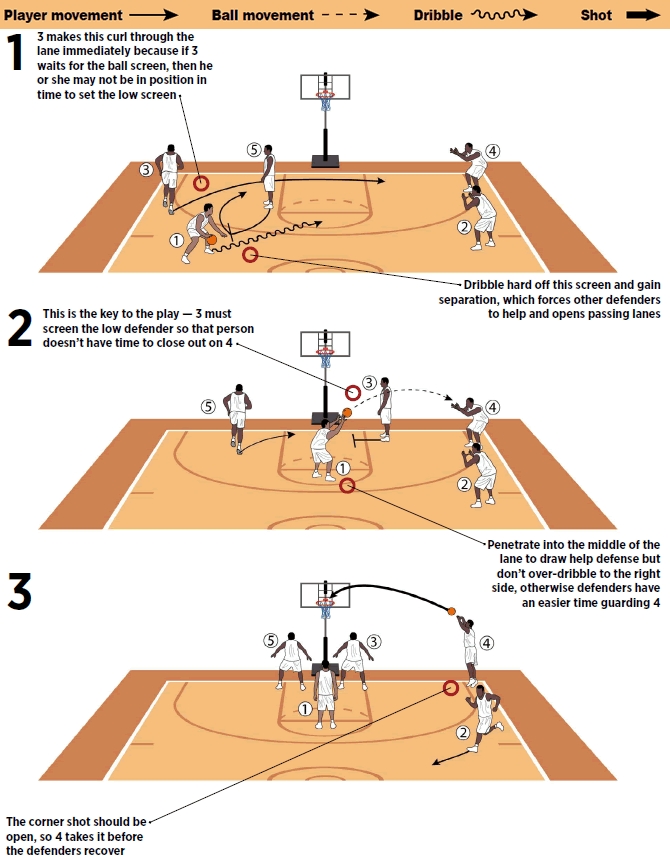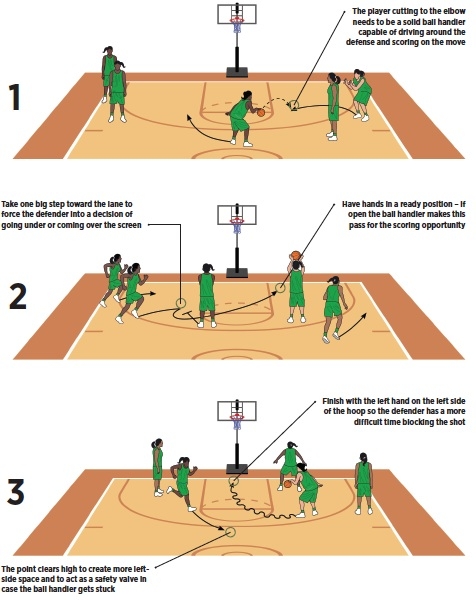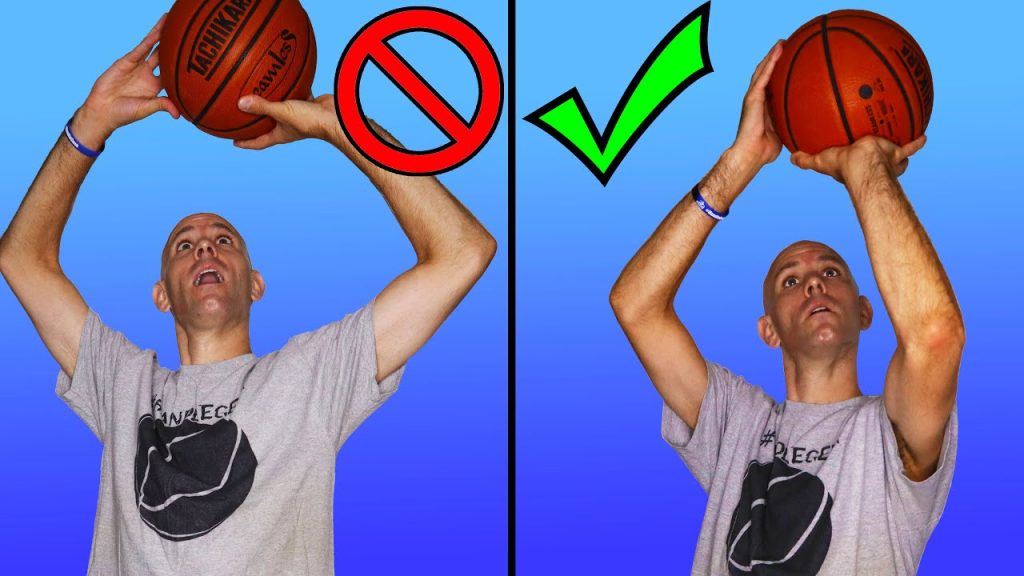Want to get an open lane in basketball? It’s crucial for scoring.
Understanding how to create space can change your game. Basketball is a sport that demands quick thinking and agility. Getting an open lane means you can drive towards the basket without defenders blocking your way. It helps you score more points and create opportunities for your team.
In this guide, we will explore practical tips and strategies to help you find those open lanes during a game. Whether you’re a beginner or looking to improve your skills, these insights will help you move more effectively on the court. Let’s dive in and enhance your basketball game by learning to find and create open lanes.
Mastering Dribbling
Dribbling is a fundamental skill in basketball. It helps players move past defenders and create open lanes. To become a great dribbler, you need to practice consistently. Focus on improving your ball control and using both hands effectively. This will make you a more versatile player on the court.
Ball Control Techniques
Good ball control is crucial for effective dribbling. Start by practicing basic dribbling drills. Keep the ball low and close to your body. This makes it harder for defenders to steal the ball. Use your fingertips to control the ball, not your palms. This gives you better control and quicker movements.
Also, practice dribbling at different speeds. Change directions quickly to confuse defenders. Work on your footwork to improve your balance and agility. This will help you maintain control of the ball even under pressure.
Using Both Hands
Being able to dribble with both hands is a valuable skill. It makes you unpredictable on the court. Start by practicing dribbling with your weak hand. Spend extra time on this until it feels as natural as your strong hand.
Do drills that force you to switch hands frequently. For example, dribble in a figure-eight pattern around your legs. This helps you become comfortable using both hands. It also improves your overall ball-handling skills.
Remember, practice is key. The more you practice, the better you will become. Keep working on your dribbling skills to create open lanes and become a better player.

Credit: www.instagram.com
Effective Footwork
Effective footwork can help you create open lanes in basketball. Knowing how to move your feet properly lets you outmaneuver defenders. You can then take your shot or pass the ball to a teammate. Let’s explore some key aspects of effective footwork.
Pivoting Skills
Pivoting skills are vital for good footwork. Plant one foot firmly on the ground. Turn your body in different directions using the other foot. This helps you keep the ball away from defenders. It also allows you to find open lanes to drive or pass.
Quick Direction Changes
Quick direction changes are another essential part of footwork. They keep defenders guessing and unable to keep up. Practice sudden stops and sharp turns. This will help you change directions quickly and create space. These moves can help you find an open lane to the basket.
Reading The Defense
Understanding how to read the defense is key in basketball. This skill helps players find open lanes and make smart plays. It involves recognizing patterns and predicting opponents’ actions.
Identifying Weak Spots
To identify weak spots in the defense, watch how defenders move. Look for players who react slowly or leave gaps. These weak spots are opportunities for you.
| Weak Spot | Action |
|---|---|
| Slow Defender | Drive past them quickly |
| Gaps in Zone Defense | Position yourself in open areas |
Anticipating Moves
Anticipating the defense’s moves can give you an advantage. Watch for signs of their next actions. A defender’s body language can reveal their intentions. Use this to plan your moves.
- Watch their eyes: Defenders often look where they plan to go.
- Notice footwork: Quick foot movements can indicate a shift.
- Pay attention to positioning: It reveals their strategy.
By reading these cues, you can find open lanes and make effective plays. Practice these skills during games and drills to improve.
Setting Screens
Setting screens is a fundamental skill in basketball. A well-executed screen can open up lanes and create scoring opportunities. This section will cover the different types of screens, timing, and execution.
Types Of Screens
There are various types of screens used in basketball. Each has its own purpose and application.
- Pick and Roll: The most common type. The screener sets a screen and then rolls to the basket.
- Pick and Pop: Similar to pick and roll, but the screener steps out for a jump shot.
- Back Screen: The screener sets a screen behind the defender, often used for cutting to the basket.
- Down Screen: The screener sets a screen facing the basket, helping teammates get open shots.
Timing And Execution
Timing is crucial in setting effective screens. A poorly timed screen can result in turnovers or offensive fouls.
- Positioning: Stand still and wide. Ensure feet are shoulder-width apart.
- Communication: Use verbal or non-verbal cues to signal your teammates.
- Contact: Make contact with the defender, but avoid pushing or leaning.
- Roll or Pop: Decide whether to roll to the basket or pop out for a shot.
| Type of Screen | Purpose |
|---|---|
| Pick and Roll | Create driving lanes |
| Pick and Pop | Open up jump shots |
| Back Screen | Cut to the basket |
| Down Screen | Open up shots |
Practicing these screens can help your team become more effective on offense. Remember, good screens require proper timing, positioning, and communication.
Using Fakes
Using Fakes can be a game-changer in basketball. Fakes can create opportunities and keep defenders guessing. This section explores two effective fakes: Pump Fakes and Crossover Moves. Mastering these can help in getting open lanes.
Pump Fakes
A pump fake is a deceptive move. The player pretends to take a shot. This can make the defender jump or move. To execute:
- Hold the ball firmly.
- Make a quick, short upward motion.
- Keep your eyes on the rim.
- Watch the defender’s reaction.
Once the defender reacts, drive past them. Use your quickness to gain an open lane.
Crossover Moves
A crossover move involves switching the ball from one hand to another. This move can confuse the defender. Here’s how to do it:
- Dribble the ball with one hand.
- Quickly switch the ball to the other hand.
- Use your body to shield the ball.
- Change direction swiftly.
The key is speed and control. This move can break the defender’s balance and create space.

Credit: www.basketballcoachweekly.net
Utilizing Speed
Basketball players can gain an advantage by utilizing their speed. A quick burst can create an open lane, making it easier to score. Speed not only helps in offense but also aids in defense. Here, we will discuss some effective ways to use your speed in basketball.
Acceleration Techniques
Acceleration is key to outpacing your defender. Focus on these techniques:
- Quick First Step: Start with a quick first step to surprise your opponent.
- Low Center of Gravity: Stay low to the ground for better balance and control.
- Explosive Movements: Use your leg muscles to push off quickly.
Use these techniques to gain a speed advantage. Practice these moves regularly to improve your acceleration.
Maintaining Control
Speed is useless without control. Here are some tips:
- Dribbling Skills: Keep the ball close to your body.
- Head Up: Always keep your head up to see the court.
- Footwork: Use quick and controlled steps to maintain balance.
Good control ensures you don’t lose the ball. Practice these tips to improve your control during high-speed plays.
Creating Space
Creating space on the basketball court is crucial for making successful plays. It allows you to have a clear path to the basket or make a clean shot. Learning different techniques will help you in achieving this. Let’s explore some effective methods for creating space.
Step-back Moves
Step-back moves are a great way to create space from your defender. They are quick and effective. Here’s how to perform a step-back move:
- Dribble towards your defender.
- Plant your lead foot firmly.
- Push off your lead foot.
- Step back quickly.
- Ensure you maintain balance.
- Take the shot or pass.
Practice makes perfect. Regular drills can enhance your step-back moves.
Lateral Movements
Lateral movements help you move sideways to evade defenders. It’s all about quick feet and smooth transitions. Follow these steps:
- Start in an athletic stance.
- Keep your knees slightly bent.
- Move side to side, staying low.
- Use short, quick steps.
- Maintain control of the ball.
Drills focusing on lateral speed can improve your movements. Lateral movements can confuse defenders and create space.
| Move | Key Points |
|---|---|
| Step-Back | Quick step back, maintain balance, shoot or pass |
| Lateral Movements | Side steps, stay low, quick feet |
Creating space is essential in basketball. Implement these techniques to improve your game. Practice regularly and stay focused.

Credit: www.facebook.com
Collaborating With Teammates
To get an open lane in basketball, collaborating with teammates is crucial. A successful play requires good communication, effective passing, and understanding each other’s movements.
Communication Strategies
Effective communication on the court keeps everyone informed. Use hand signals and verbal cues to indicate your intentions. Make eye contact to establish a connection with your teammates.
Establish a common language for plays and movements. Keep communication clear and concise to avoid confusion. Shouting loudly isn’t necessary; focus on being understandable.
Passing Effectively
Passing the ball effectively opens up opportunities. Use chest passes, bounce passes, and overhead passes depending on the situation.
| Type of Pass | When to Use |
|---|---|
| Chest Pass | Short distances, quick delivery |
| Bounce Pass | To avoid defenders, low trajectory |
| Overhead Pass | Long distances, high trajectory |
Always aim for the receiver’s chest to make the pass easy to catch. Use fake passes to deceive defenders and create openings. Keep the ball moving to prevent the defense from setting up.
Building Stamina
Building stamina is crucial in basketball. It helps players maintain energy throughout the game. With good stamina, you can keep up with fast-paced play. This is essential for getting an open lane and scoring. Below, we discuss endurance drills and recovery tips to help you build stamina.
Endurance Drills
Endurance drills improve your stamina. Start with sprints. Sprint from one end of the court to the other. Do this repeatedly. Gradually increase the number of sprints. Another good drill is the shuttle run. Place cones at regular intervals. Run to each cone and back. This builds endurance and agility.
Try interval training. Run at full speed for 30 seconds. Then jog for 60 seconds. Repeat this cycle several times. It boosts your stamina and mimics the game’s pace. Incorporate jump rope sessions. Jumping rope improves cardiovascular health. It also strengthens your legs, which is key for basketball.
Recovery Tips
Recovery is as important as training. Rest allows your muscles to heal. Ensure you get enough sleep. Aim for at least 8 hours each night. Hydration is vital. Drink plenty of water before, during, and after practice. This prevents cramps and keeps you energized.
Stretching helps too. Stretch your muscles after every workout. This reduces soreness and improves flexibility. Ice baths can speed up recovery. They reduce inflammation and muscle pain. Consider a balanced diet. Include proteins, carbs, and fats. Proper nutrition fuels your body and aids recovery.
Frequently Asked Questions
What Is An Open Lane In Basketball?
An open lane in basketball is an unobstructed path to the basket. It allows a player to drive towards the hoop easily.
How Can I Create An Open Lane?
To create an open lane, use effective dribbling and quick movements. Utilize screens and fakes to mislead defenders.
Why Is Getting An Open Lane Important?
Getting an open lane is important for easy scoring opportunities. It increases the chances of making successful shots or layups.
What Drills Help In Creating Open Lanes?
Drills like dribble penetration and pick-and-roll help create open lanes. Practice these regularly to improve your skills.
Conclusion
Mastering the open lane in basketball takes practice and patience. Focus on your footwork. Keep your eyes up to scan the court. Use quick, decisive movements. Work on your dribbling and passing skills. Communicate with your teammates effectively. Stay aware of your positioning.
These strategies will help you find open lanes more easily. Remember, consistency is key. Practice regularly and stay determined. Your efforts will pay off in the game. Now, hit the court and start improving!


